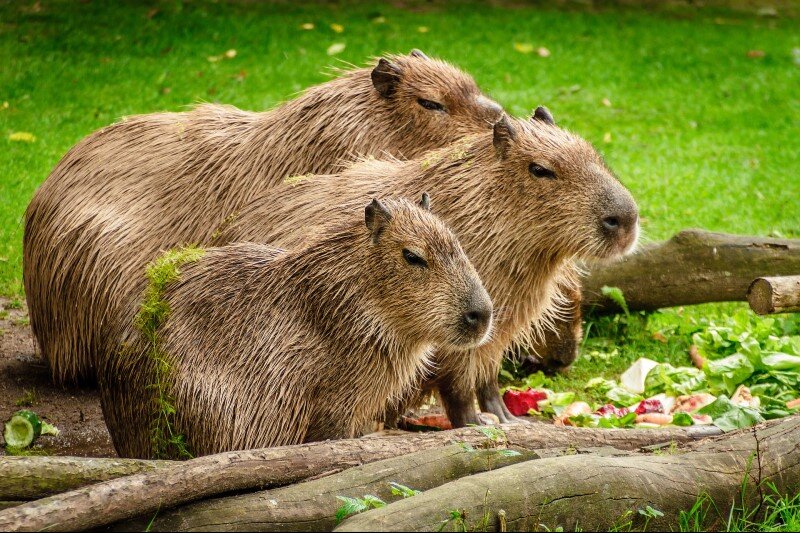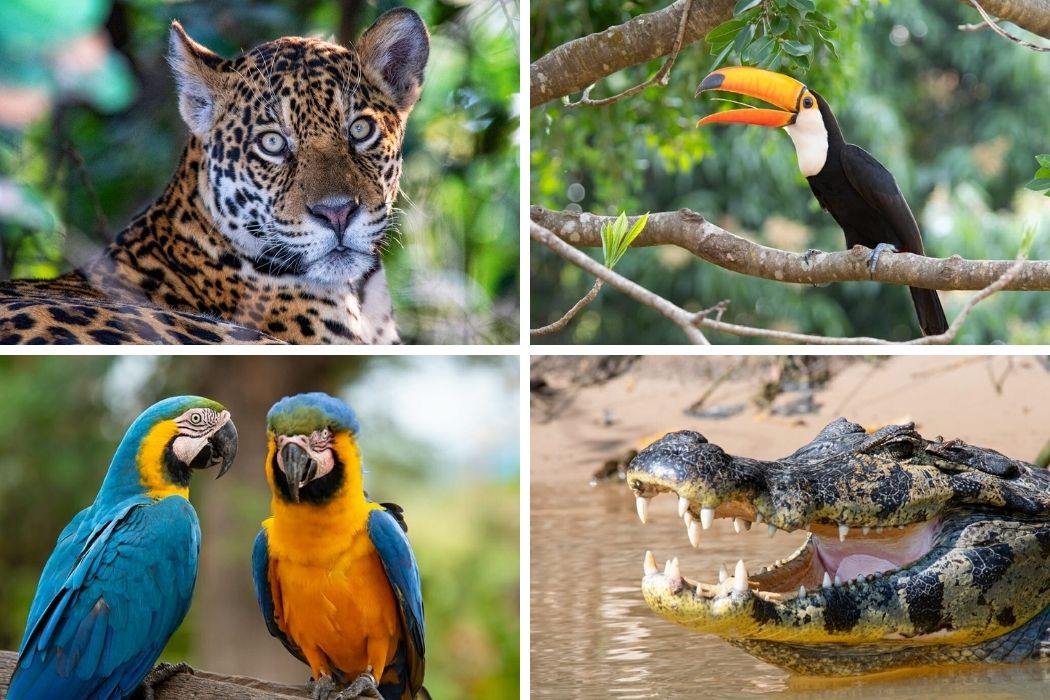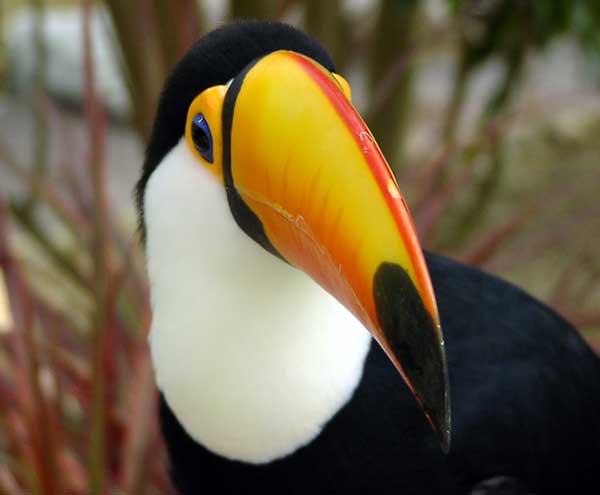Brazil is a land of incredible biodiversity. Its wildlife is famous worldwide.
From the Amazon rainforest to the Pantanal wetlands, Brazil hosts a variety of animal species. This South American country is a paradise for nature lovers. Unique creatures and vibrant ecosystems thrive here. Brazil’s rich wildlife includes jaguars, capybaras, and toucans.
These animals live in diverse habitats, from dense forests to open grasslands. Exploring Brazil’s wildlife offers a glimpse into nature’s wonders. The country’s ecosystems support countless species, some found nowhere else. Join us as we journey through Brazil’s wild side. Discover the amazing animals that make Brazil special. Get ready to be amazed by the natural beauty and diversity of Brazil’s wildlife.
Amazon Rainforest Species
The jaguar is a powerful predator. It has a strong bite. Jaguars love the dense rainforest. They hunt at night. Their spots help them hide. They are great swimmers. They often hunt fish and reptiles. Jaguars are top of the food chain. Protecting them helps the whole ecosystem.
Sloths move very slowly. They live in trees. Their fur is long and shaggy. Sloths eat leaves. They sleep a lot. Their slow movement helps them avoid predators. They are good swimmers too. Sloths play a key role in their habitat. They help spread seeds.
River dolphins are unique to the Amazon. They are pink in color. These dolphins have long snouts. They are very smart. River dolphins use echolocation to find food. They eat fish and small animals. These dolphins are friendly and playful. They are important for the river ecosystem.

Credit: www.acanela.com
Pantanal Wetlands Wildlife
Capybaras are the largest rodents in the world. They love water and live near rivers. Their fur is thick and helps them swim. Capybaras are social animals and live in groups. These groups can be up to 20 members. They eat grass and plants. They are friendly and easy to spot.
Giant Otters are playful animals. They live in the Pantanal wetlands. They have long bodies and webbed feet. These otters are excellent swimmers. They eat fish and small animals. Giant Otters live in family groups. They are very protective of their young. Their loud calls can be heard from far away.
Hyacinth Macaws are the largest parrots. Their feathers are bright blue. They have strong beaks to crack nuts. Macaws live in the trees of the Pantanal. They are very social birds. They often fly in pairs or groups. Hyacinth Macaws eat fruits and seeds. Their calls are loud and clear.
Atlantic Forest Inhabitants
Golden Lion Tamarins are small monkeys. They live in the Atlantic Forest. Their fur is bright orange. They are endangered. They eat fruits, flowers, and insects. They live in family groups. They sleep in tree holes. They are active during the day.
Maned Wolves are tall and slender. They have reddish fur. Their legs are long and black. They live in grasslands and forests. They are nocturnal hunters. They eat small animals, fruits, and plants. Their howl is very loud. They are solitary animals.
Harpy Eagles are powerful birds. They have grey feathers. Their wings are broad. They live in tropical forests. They hunt monkeys and sloths. Their talons are very strong. They build large nests. They are rare and majestic.

Credit: brazilgreentravel.com
Unique Reptiles
Anacondas are known for their massive size. They are among the largest snakes in the world. They can grow over 30 feet long. They live in swamps and rivers. Anacondas are great swimmers. They eat fish, birds, and small mammals. They use their strong bodies to squeeze their prey.
Caiman are small relatives of alligators. They live in rivers and lakes. Their skin is tough and bumpy. Caiman eat fish, birds, and small animals. They have sharp teeth. They are quick and can catch prey easily. Caiman are often seen in the Amazon.
Tegu lizards are large and strong. They can grow up to 5 feet long. Their skin is covered with bright patterns. Tegus eat insects, fruits, and eggs. They are very smart. Some people keep them as pets. Tegus can run fast and climb trees. They are often found in forests.
Birdwatcher’s Paradise
Brazil is home to many toucans. These birds are known for their large, colorful beaks. They live in the rainforests. Their bright feathers make them easy to spot. Toucans eat fruits, insects, and small animals. Watching them is a treat for bird lovers.
Scarlet macaws are stunning birds. Their feathers are red, blue, and yellow. They are very social and loud. These birds often fly in pairs. They eat fruits, nuts, and seeds. Seeing them in the wild is amazing.
Hoatzins are unique birds found in Brazil. They have blue faces and red eyes. Their feathers are brown and streaked. Hoatzins live near water. They eat leaves and fruits. Young hoatzins have claws on their wings to climb trees. Watching them is fascinating.
Marine Life Along Coastlines
Sea turtles are ancient creatures. They swim in Brazil’s warm waters. These turtles can live for many years. Some even live for 50 years. Turtle eggs are often found on sandy beaches. Protecting their nests is very important.
Humpback whales visit Brazil’s coast every year. They come to have their babies. The whales sing beautiful songs. These songs can be heard underwater. Humpbacks are known for their big jumps. They leap out of the water, making a splash.
Reef fish are colorful and small. They live in coral reefs. Brazil has many of these reefs. Fish hide among the coral to stay safe. Reef fish eat algae and small sea creatures. They help keep the reef healthy.
Insects And Arachnids
Brazil hosts diverse insects and arachnids, including colorful butterflies and unique tarantulas. This biodiversity contributes to the rich wildlife of the region.
Bullet Ants
The bullet ant has the most painful sting of any insect. Its sting feels like a bullet shot. These ants live in trees and on the ground. They are found in the rainforests of Brazil. Bullet ants are large, about an inch long.
Brazilian Wandering Spiders
Brazilian wandering spiders are very dangerous. They are one of the most venomous spiders. These spiders do not stay in webs. They wander the forest floor. Their bite can be deadly to humans.
Morpho Butterflies
Morpho butterflies are known for their bright blue wings. They are among the largest butterflies, with wings spanning up to six inches. These butterflies live in the tropical forests of Brazil. The vibrant blue color helps them avoid predators.
Conservation Efforts
Brazil has many national parks. These parks protect forests and wildlife. Visitors can see amazing animals. Jaguars and toucans live in these parks. Protecting these areas is important. It helps keep nature safe.
Wildlife reserves are also key. These places protect animals. They provide safe homes for wildlife. People cannot hunt here. This helps animals live safely. Many species survive because of reserves.
Local communities play a big role. They help protect nature. Programs teach people about conservation. Communities learn to care for wildlife. Education is vital. It helps people understand the importance of nature.

Credit: www.thewildlifediaries.com
Frequently Asked Questions
What Wildlife Does Brazil Have?
Brazil boasts diverse wildlife, including jaguars, capybaras, macaws, anacondas, and toucans. The Amazon rainforest houses countless unique species.
What Is Brazil’s Iconic Animal?
Brazil’s iconic animal is the jaguar. Jaguars are powerful predators and symbols of strength in Brazilian culture. They thrive in the Amazon rainforest.
What Is The Biggest Animal In Brazil?
The biggest animal in Brazil is the jaguar. Jaguars are large predators found primarily in the Amazon rainforest.
What Is Brazil’s National Animal?
Brazil’s national animal is the jaguar. It symbolizes strength, power, and grace in Brazilian culture. Jaguars are vital to Brazil’s biodiversity.
Conclusion
Brazil’s wildlife is diverse and fascinating. Each animal has its unique charm. Jaguars roam the dense forests. Colorful birds brighten the skies. River dolphins swim in the Amazon. There’s always something new to discover. Visiting Brazil offers a chance to see these wonders.
Nature lovers will cherish these experiences. Protecting these creatures is crucial. Conservation efforts matter. Explore, enjoy, and respect Brazil’s wildlife. It’s a treasure worth preserving.












